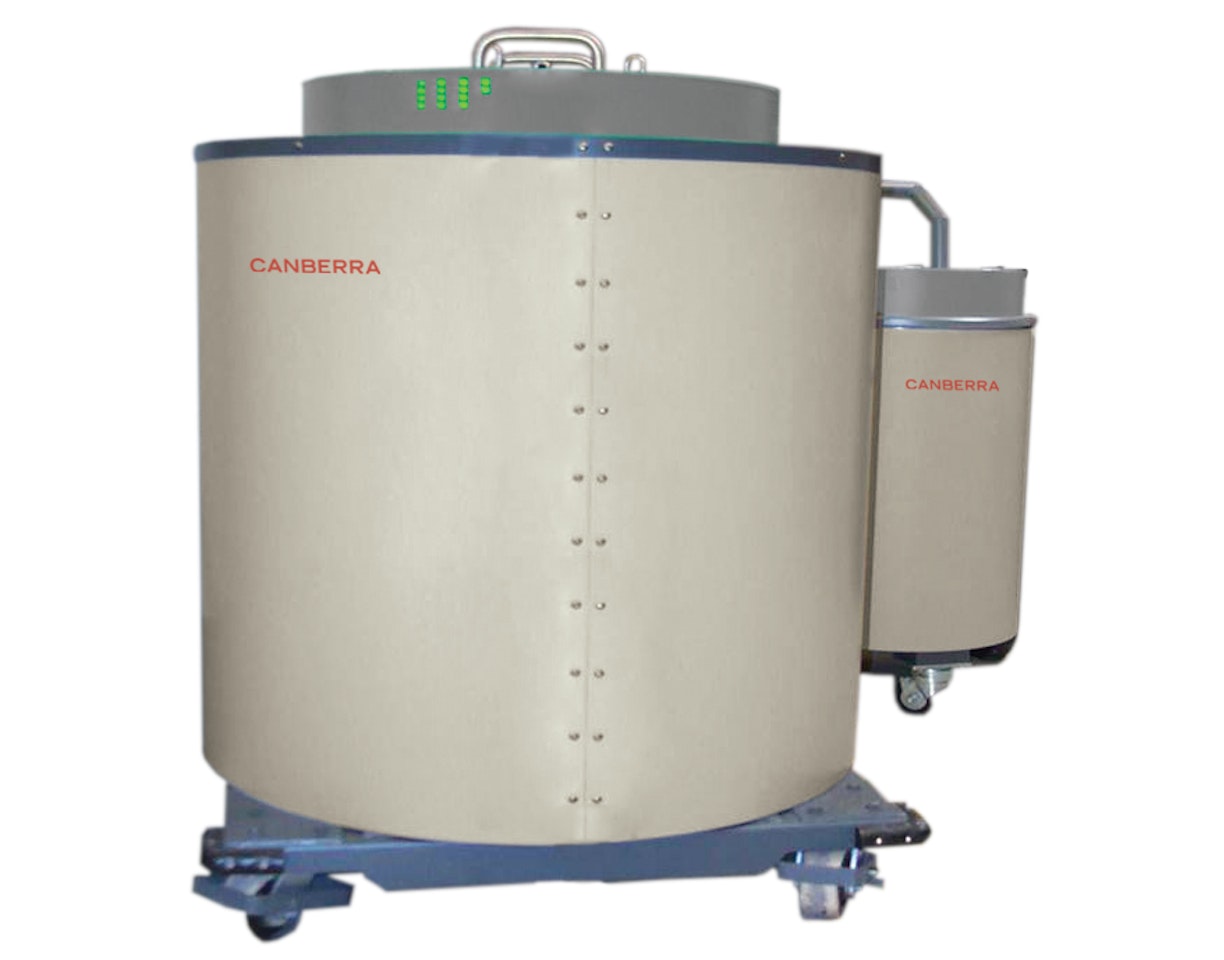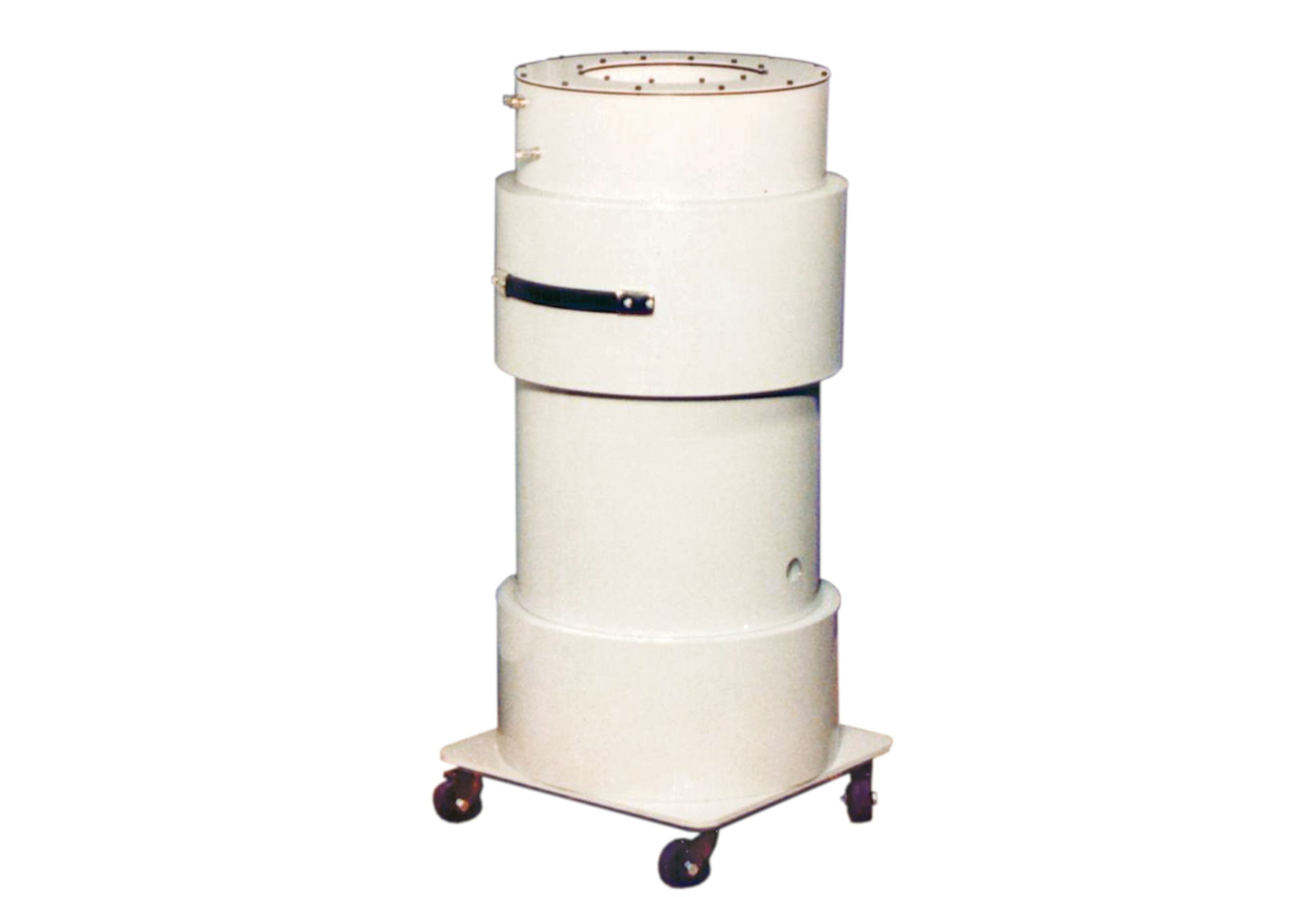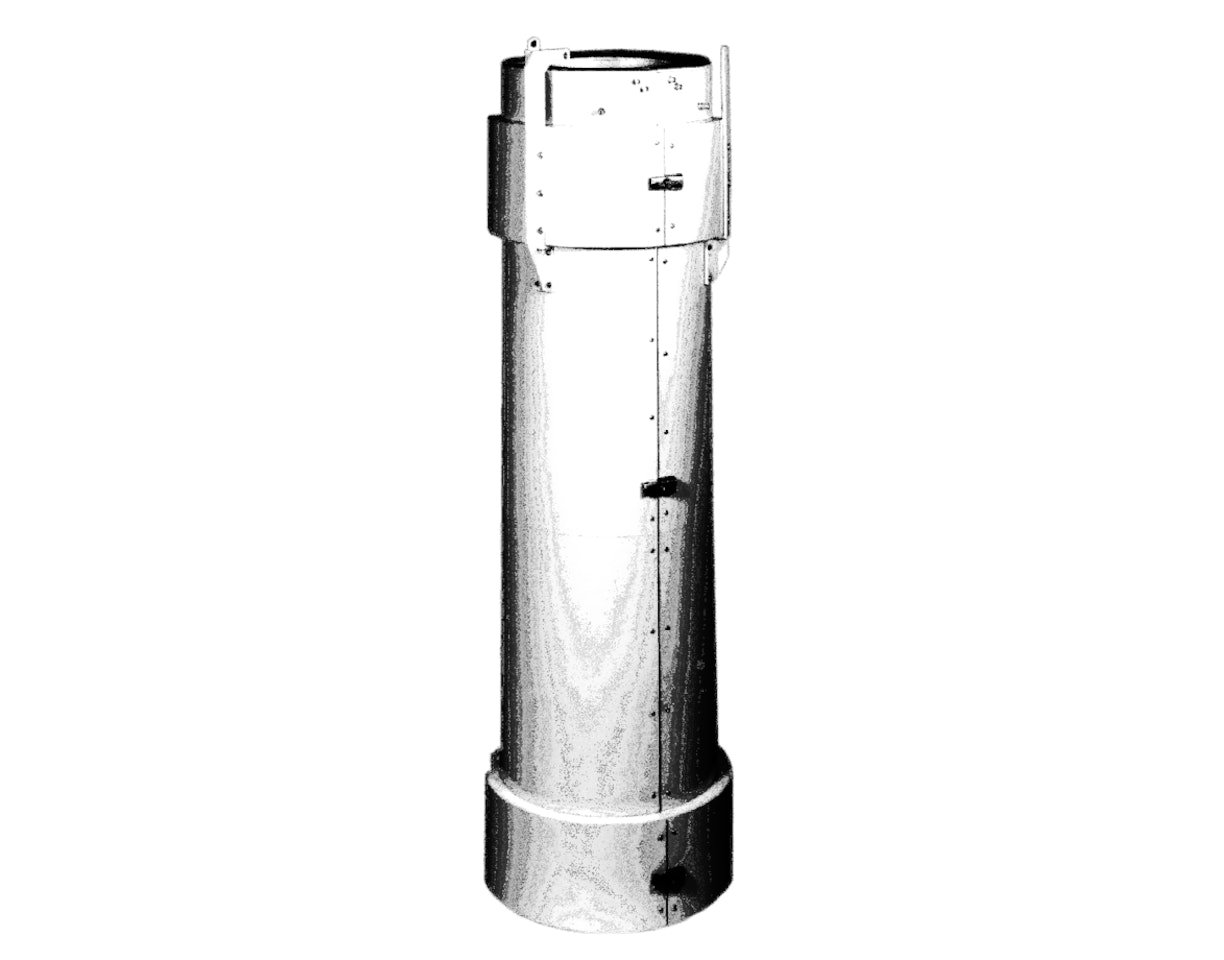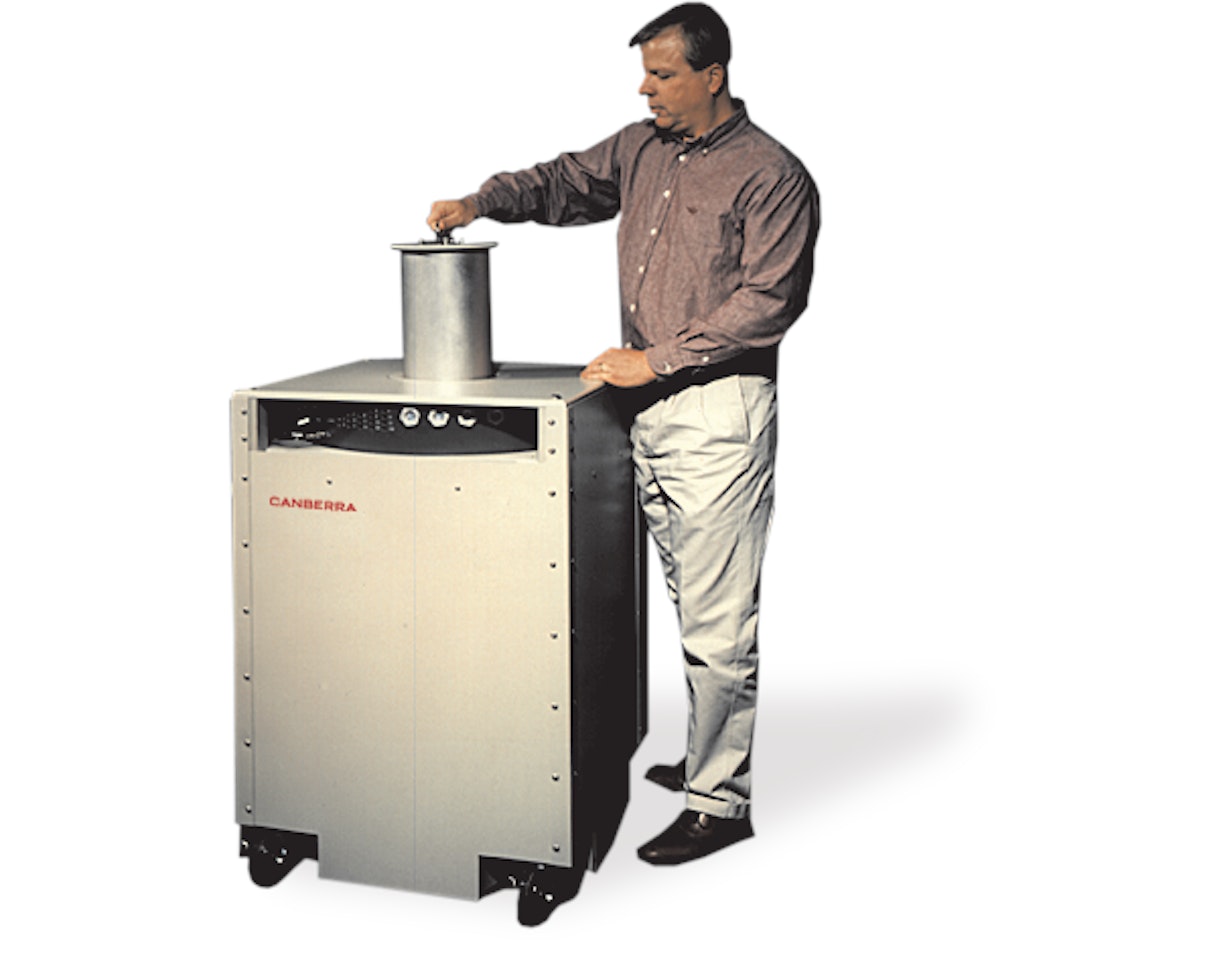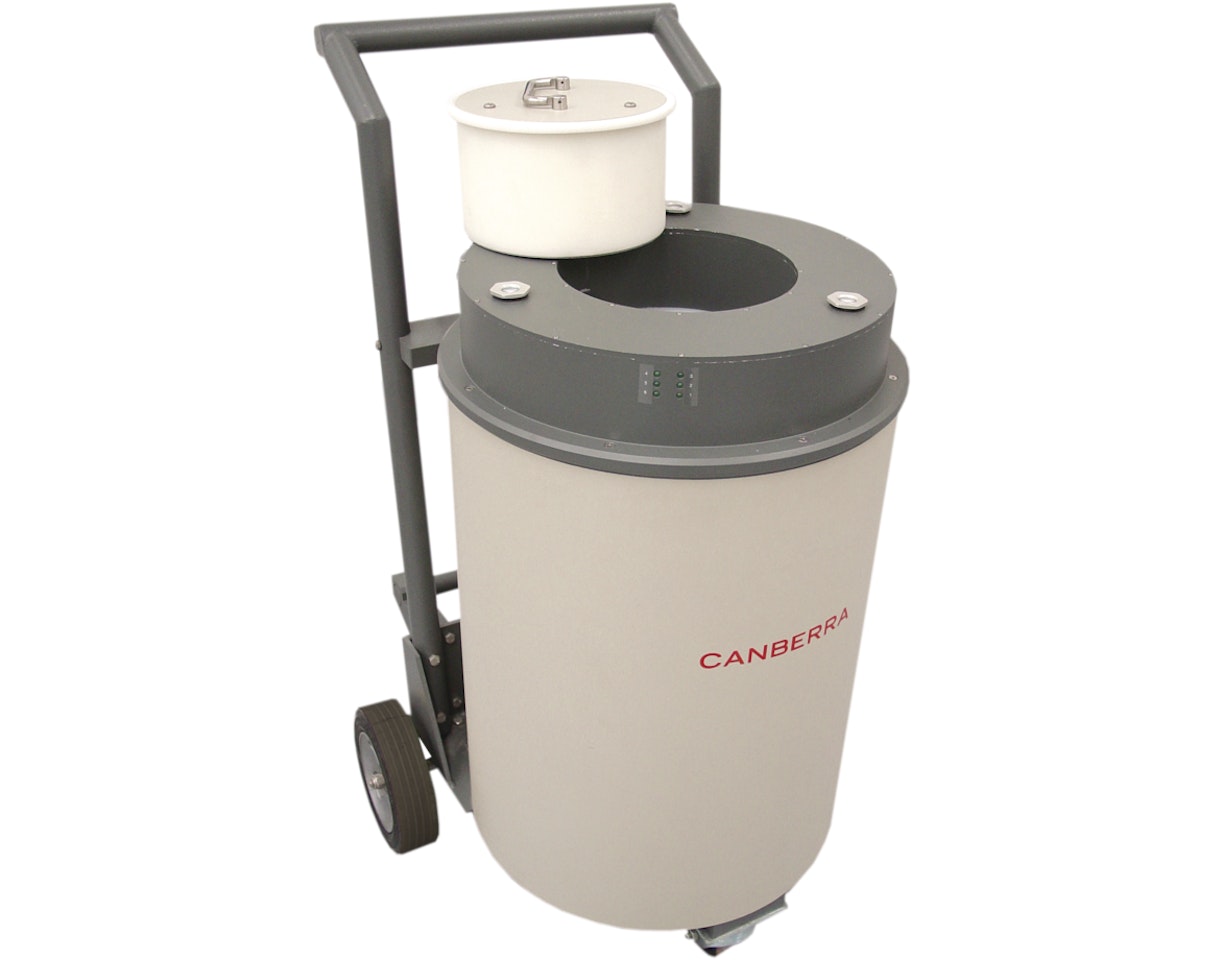Description
The JCC-31 counter, which is based on a technology transfer from Los Alamos National Laboratory, measures the 240Pu-effective mass in a sample by detecting coincidence neutrons from the spontaneous fission of plutonium. The effective mass of 240Pu is the mass of 240Pu which would emit the same number of spontaneous fission neutrons per second as the combined 238Pu, 240Pu and 242Pu in the sample.
The detector can measure up to several kilograms of plutonium.
The JCC-31 counter has a cylindrical-shaped sample cavity 41 cm high by 17 cm in diameter. It is intended to assay plutonium samples including PuO2, mixed oxides (PuO2-UO2), metal carbides, fuel rods, fast critical assemblies, solution, scrap, and waste. A cadmium sleeve surrounds the sample cavity to prevent the re-entry of thermalized neutrons into the sample, which could induce fission in the sample and adversely affect the results. Outside the cadmium sleeve is a ring of high-density polyethylene with eighteen 3He tubes placed in the polyethylene.
The tubes are arranged in a single ring around the sample with optimum spacing between the tubes for maximum counter efficiency for a transportable counter. The tubes are divided into six groups of three with each group wired together and connected to one JAB-01 Amplifier/Discriminator circuit board. The six JAB-01s are mounted inside a sealed junction box. LED indicator lights are placed externally on the junction box to indicate proper operation of each JAB-01 channel. Electrical connections between the JCC-31 counter and the JSR-12™ unit include +5 V and HV. The combination of signals will be combined into a logical OR.
A cadmium sleeve wrapped around the outside of the JCC-31 counter provides radiation protection for personnel as well as background reduction.
A JSR-12 Neutron Coincidence Analyzer, a computer and analysis software are required for coincidence counting but are not included with the JCC-31 counter.
